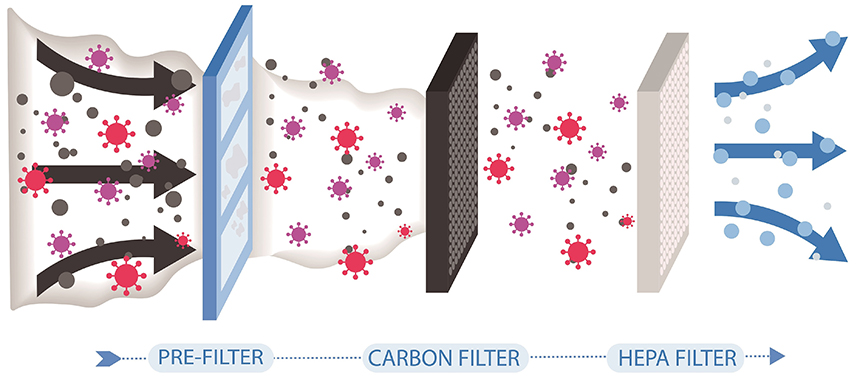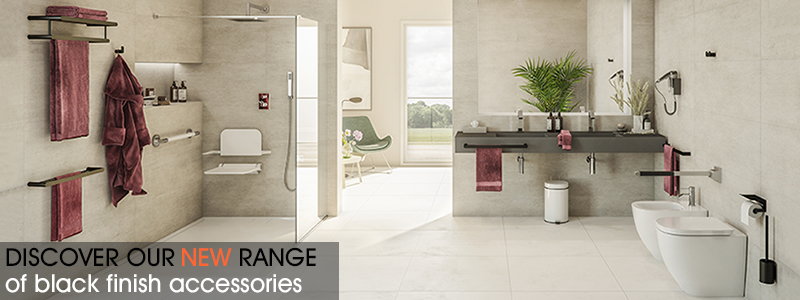Are HEPA filters a safe solution for COVID-19?
Ever since the outbreak of the pandemic began due to the SARS-CoV-2 (Covid-19) virus, particle filters, especially those like HEPA, have been gaining much distinction in the media. When the aeronautical industry began basing its security discourse against this dreaded virus on the aircraft’s air recirculation systems, they were sure to be equipped with particle filters of this type.
Let’s start at the beginning: What is a HEPA filter? HEPA is the English acronym for "High Efficiency Particulate Air" In reality, we can say that HEPA filters are mechanical filters with a capacity for sifting small particles at a much higher rate than any other conventional filter.
Apart from the HEPA filters, we can also find, below, the EPA "Efficient Particulate Air" and above the ULPA "Ultra Low Penetration Air". These three types of filters are also known as "absolute filters" and are regulated by the UNE-EN 1822-1: 2020 standard.
In addition to airplanes, these filters are used in operating rooms, other sterilized clean rooms, inside vacuum cleaners, air conditioners, refrigerators, masks, respirators and, of course, included inside high-speed electric hand dryers to make sure those small particles are caught and not blown back into a person’s hands after washing.
Filtering very small particles, in theory, is quite simple: we just have to put a sieve with holes tiny enough to prevent the passage of the particles that we want to block. We could even put a sieve without any hole, thus avoiding the passage of any particle, no matter how small.
"HEPA filters allow the blockage of very small particles while continuing to let air passing through it effortlessly"
While this may seem simple, it’s much more complex when in practice. If we do not put holes in the sieve, we block all the particles, yes, but we also block the entire passage of air, preventing its recirculation within the device. In the case of a vacuum cleaner, it would cause it to be unable to suck up dust particles and dirt from the floor. In an air conditioning system, we would not have recirculation of the air in the room. In an electric hand dryer, it would not blow air and therefore would not dry our hands. It is for this reason that we must be able to design HEPA filters with holes that are small enough so that the particles that we want stopped do not pass, but large enough so that the necessary air passes through the filter to make the unit work effectively and efficiently.
To summarize, if the holes are too small, it takes a lot to get the air flowing through that filter. This is what is known as head-loss or pressure-loss/drop: the motor tries to move a lot of air, but the filter won't let it. HEPA filters allow the blockage of very small particles while continuing to let air passing through it effortlessly.
HEPA filters usually have the filter material pleated which maximizes the total filter surface area. In an FFP2 or FFP3 mask, the filter material is on the surface of the mask; In the case of filters used in hand dryers, the filter material is folded in the shape of an accordion. If we stretch the material, we obtain a length of about 10 times the size of the original filter. Having this excess material allows us to greatly reduce the holes in the sieve without compromising the performance of the hand drying unit
Now here is the question of the year: Are these HEPA filters capable of blocking particles as small as a virus, and more specifically, the Covid-19 virus? According to EN-1822, the filters must be tested with the particle of maximum penetration size (MPPS - Most Penetrating Particle Size). The most critical particle size (MPPS) for each filter is at a window ranging from 0.12 to 0.25 microns. Coronaviruses are large viruses (within the size range of a virus). In the case of Covid-19, its size is estimated to be between 0.12 and 0.16 microns. Fortunately, viruses do not move autonomously and generally bind to other types of particles (especially aqueous), including respiratory droplets, which are the main mechanism of human-human transmission described in this document of the World Health Organization. These respiratory particles are larger than 5 microns in size. Therefore, we see that in this case, the size is well above the minimum size filtered by a HEPA filter (from 0.12 to 0.25 microns) and it is here where the HEPA filters really do their job: they trap the droplets of respiratory infections (or other particles) that viruses have attached to and prevent them from remaining in the passenger compartment, whether on an airplane, in a room, a home, or in a public toilet.
"A HEPA H13 filter is capable of blocking up to 99.95% of Maximum Penetration Size Particles (MPPS)."

Finally, we should know what percentage of particles the HEPA filter is capable of blocking and what percentage of particles pass through it. Now keep in mind that 100% filtration is impossible, but these types of filters are pretty close to it: a HEPA H13 filter is capable of blocking 99.95% of Maximum Penetration Size (MPPS) particles. Only 0.05% of particles of that size are able to escape to the filter. If a filter is able to do this with the particle at maximum penetration size, with larger particles - such as respiratory particles - the blocking percentage will be even higher.
An aircraft ventilation system, air conditioning system, vacuum cleaner or an electric hand dryer moves the air in the passenger compartment, but if we provide these products with an exceptional filtering system, we will achieve that the vast majority of particles that are absorbed by the units are trapped in the filter and not returned to the passenger compartment. We cannot say that the units have killed the virus, but we can say that a large amount of the particles that carry it have accumulated in the filter and, therefore, have been made to disappear from the area where users breathe. For this reason, good filter maintenance is essential, especially now that we are suffering from this terrible pandemic.
Thus far, we have talked about high-efficiency filters that trap very small particles and even the vast majority of viruses and bacteria. Now we ask: What if the filter were capable of eliminating the viruses that are trapped in it? We will be sure to discuss this on our next post… stay tuned
Antoni Travesa
Technical Office Manager at Mediclinics S,A.



